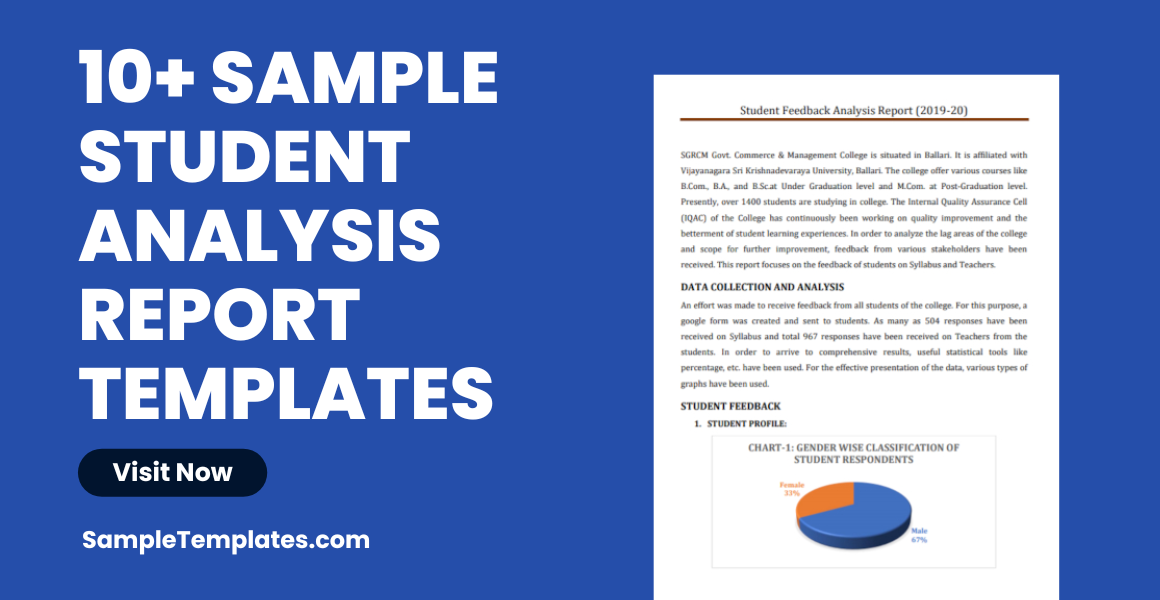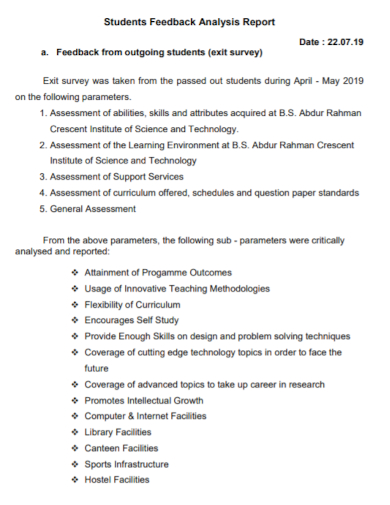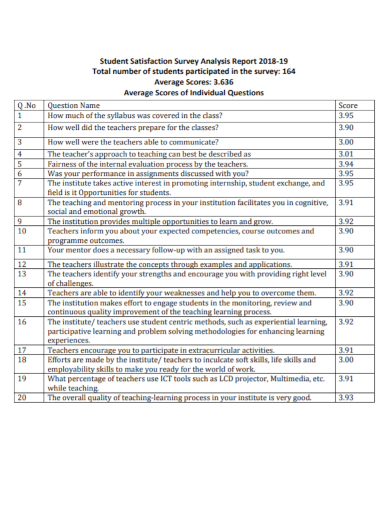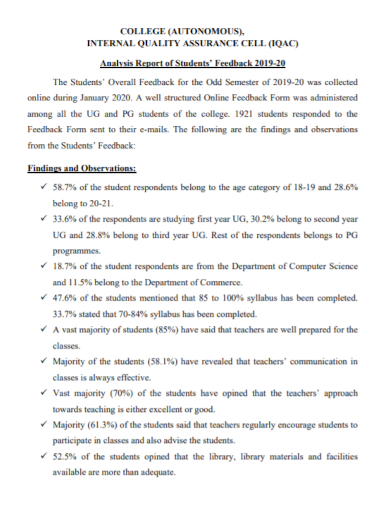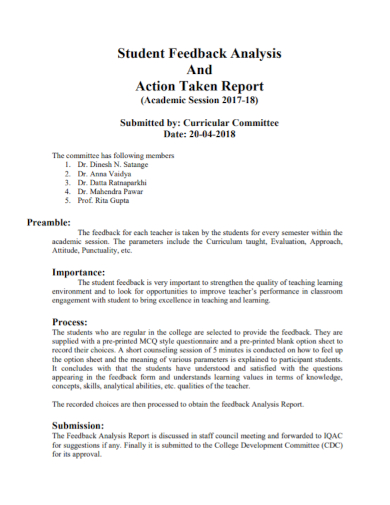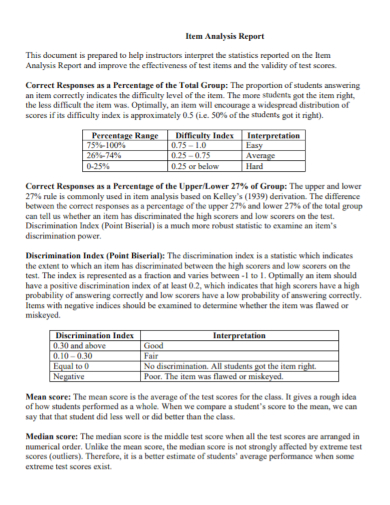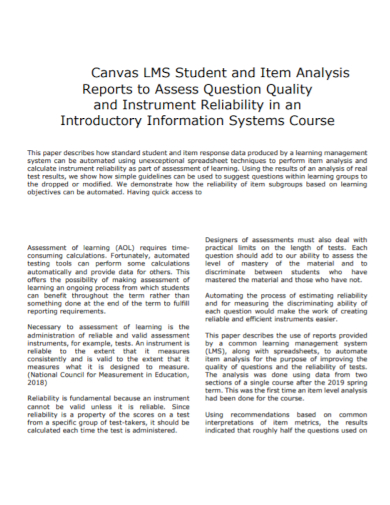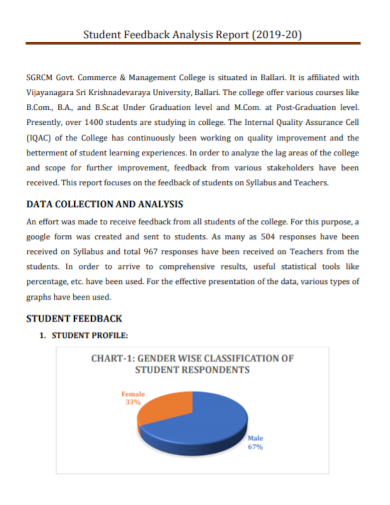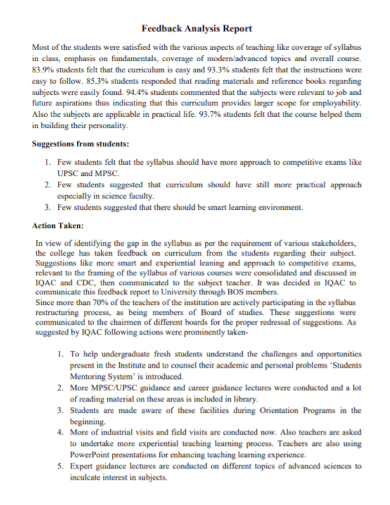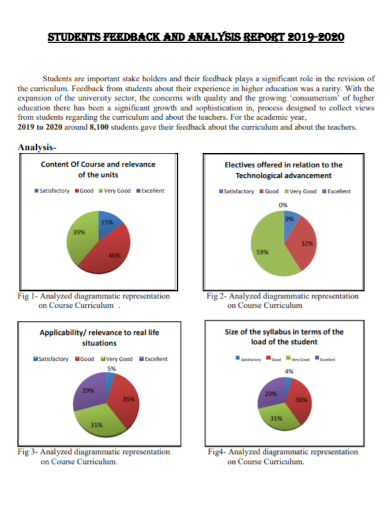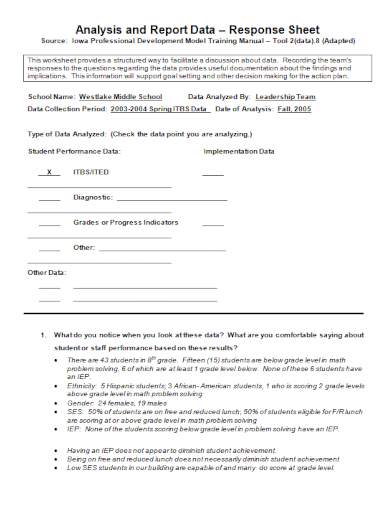Norene J. Bella wrote in the book “Reflective Analysis of Student Work: Improving Teaching Through Collaboration” that all students can acquire the skills and attitudes fundamental to be productive and contributing citizens if the schools must be committed to assisting teachers, instructors, mentors, and other educators shift the focus in all areas of their practices. As a teacher, you need to shift from teaching isolated content to teaching content in a way that facilitates the development of integral thinking skills and processes. Most importantly, teachers need to focus on being an evaluator as they plan for the individual growth of their students. In this article, we provide you with some helpful steps and a wide array of downloadable student analysis report templates so that you can monitor the progress and enhance the learning abilities of your students. Keep on reading!
10+ Student Analysis Report Samples
1. Student Feedback Analysis Report
2. Student Satisfaction Survey Analysis Report
3. Teaching Student Feedback Analysis Report
4. College Student Feedback Analysis Report
5. Student Feedback Analysis Action Report
6. Student Item Analysis Report
7. Student Quality Analysis Report
8. Student Data Collection Analysis Report
9. Sample Student Feedback Analysis Report
10. Printable Student Feedback Analysis Report
11. Student Performance Data Analysis Report
What is a Student Analysis Report?
A student analysis report sample is a document aimed at providing teachers, instructors, and other educators sufficient information about the current status of student performance and the understanding of various subject concepts and skills. This analytical report clearly assists teachers and/or students in enhancing the quality of teaching and learning.
How to Create a Student Analysis Report
Teachers and instructors need to provide a safe, nurturing environment where the students are engaged in relevant and meaningful learning that will continue throughout their lives. Do your best to show your thoughtfulness while deliberating and designing significant learning experiences for the students, helping them to promote self-directed learning.
We recommend that you use our analysis report templates above that you can use conveniently. Here are the steps that work analysis after you download your selected student analysis report template:
1. Specify the learning goals
Use significant questions: what, why, how, and who while you are specifying the learning goals of your analytical report for your individual students. For example, what are the main problems or hardships of the majority of the students in their studies? How can you assist them in developing their skills and talents in a particular subject area?
2. Set up the right standard
The school committee along with the school administrators and the principal will need to set up the right and logical standard based on the learning goals list of the educational curriculum and standards selected for the student analysis program. The standards to be assessed and the standard that students will be measured against are integral so that you can develop an analysis in different kinds of options possible.
3. Select the suitable assessment option
There are a wide selection of assessment options such as evaluation exams, complicated projects, and many others that you can apply. Each option has its own benefits and drawbacks. Plus, each has a specific purpose statement for certain types of student analysis. Consider all options and determine which are the most suitable for your students’ needs and resources. After this, you can now start the student analysis program along with well-trained and professional teachers.
4. Collect and analyze data
The data collected from the assessment program should form a basis for a student analytical report connected with the definite learning goals. Evaluate your students’ learning abilities from the collected data with the use of scoring or grading tables.
5. End with the final decisions
Pay attention and measure the possible outcomes of the assessment. Then, you can now end the analysis report with the final decisions. The information in this report can be valuable in developing a specific curriculum to further assist the students in their education and skills training.
FAQs
When analyzing the student results, you need to review first the individual student data analysis so that you are able to determine next instructional steps. Then, search for the students just below performance level to assist them in moving to the next level. While the students in danger of falling below a performance level must be encouraged to reinforce their understanding. On the other hand, specify the students who are in the top performance level and support them to deepen their current knowledge. After that, conduct another review for the score point distribution across the students to elevate overall performance. How to analyze student results?
Some types of assessment are state-mandated standardized tests, and comprehensive or performance tests. What are some types of assessment?
Some of the primary elements that should be included in a student progress report are a simple outline or layout of the progress report, subsections, heading, introduction, content or body, table of the student performance results, skill and performance percentages, and many others.What are some of the primary elements that should be included in a student progress report?
The basic assessments being applied in schools and academies today are diagnostic assessments, formative assessments, summative assessments, ipsative assessments, norm-referenced assessments, and criterion-referenced assessments.What are the basic assessments being applied in schools today?
In order to establish an understanding, designing, implementing, and analyzing student work, teachers and educators use this comprehensive approach called “The Collaborative Professional Development Process” and help them to design work that not only involves their students in different kinds of activities but guarantees that the activities are engaging the minds of their students. Not only the teachers analyze the learning experiences, but the process allows them to determine their effectiveness as well. Please get your student performance analysis report template today and continue to reach your goals in helping students to improve their learning skills and performance.
Related Posts
FREE 11+ Assessment Report Format Samples
FREE 10+ Education Gap Analysis Samples
FREE 10+ Sample Data Analysis
FREE 10+ Sample Psychological Reports
FREE 9+ Stock Audit Report Samples
FREE 8+ Sample Company Analysis Report
FREE Sample Survey Reports
FREE 49+ Sample Reports
FREE 43+ Report Examples
FREE 17+ Sample Student Progress Reports
FREE 12+ Sample Performance Reports
FREE 11+ External Audit Report Samples
FREE 11+ Sample Career Assessment
FREE 10+ Sample Project Assessment
FREE 10+ Sample Opportunity Analysis
